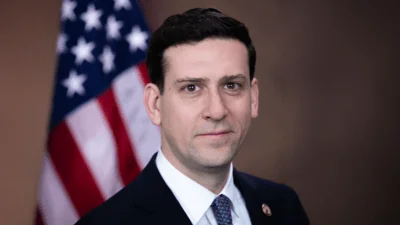Energy and Commerce Chairman Frank Pallone, Jr. (D-NJ) delivered the following remarks today at an Energy Subcommittee hearing entitled, “Building a 100 Percent Clean Economy: Solutions for the U.S. Power Sector." The hearing is the fifth hearing in the Committee’s climate change series aimed at developing comprehensive legislation to achieve a 100 percent clean economy by 2050:
Today’s hearing is the fifth hearing in the Committee’s series on building a 100 percent clean economy by 2050. Each of these hearings has focused on a separate sector of our economy, and today we will look at pathways to developing a 100 percent clean power sector.
The power sector has made noticeable progress over the last 15 years in reducing emissions from the facilities that deliver electricity to America’s homes and businesses. Its carbon emissions have fallen steadily since 2005 thanks to a gradual move away from coal to natural gas and renewable energy like wind and solar. In some respects, decarbonizing the power sector presents fewer challenges than other parts of the economy, but that does not mean it will happen overnight, especially if we electrify more aspects of the economy.
As we have heard in previous hearings, the pathway to net zero greenhouse gas pollution by 2050 relies on aggressively improving energy efficiency across all sectors; quickly electrifying as much of the economy as possible; developing and deploying low- and zero-carbon fuels where electrification is not possible; and switching to clean sources of generation for that electricity. Electrifying a wide range of services, processes, and end-uses will be crucial to achieving our climate goals, but only if that electricity comes from clean sources.
Electrifying more segments of the economy through the increased use of electric vehicles, heat pumps, and other technologies will be necessary to achieve a 100 percent clean economy. But this creates challenges even broader than the simple question of how we can incentivize more consumers to use these products. For example, a comprehensive transition to electric heat pumps over gas-fired furnaces would shift peak electricity load to the winter in many parts of the country, which presents several new challenges that would have to be addressed by power generators. And we will likely need more transmission to transport power across the country or in from offshore.
In the power sector, there are clear, achievable ways to get to 80 percent decarbonization - but it’s the last 20 percent that will, by far, be the biggest challenge. We must use all available tools. Getting to 100 percent will require a balanced portfolio of low- and zero-carbon technologies - including solar, wind and nuclear power - as well as energy storage and carbon capture technologies. Without this balanced portfolio, deep decarbonization will happen at a slower pace and at a higher cost to homeowners and businesses. A solution that is unaffordable or technologically infeasible isn’t really a solution at all. As we transition to a 100 percent clean economy, we must ensure that it does not harm people already struggling to afford their electricity bills.
We must also look to break down market barriers to clean electricity development. For example, in some areas of the country, monopoly utilities effectively prevent customers from installing and using rooftop solar. Over 70 percent of corporate renewable energy purchases occur in areas with competitive electricity markets, which illustrates the challenges that exist to renewable development in markets where one utility has a monopoly.
While the power sector has made progress reducing its emissions, we need Federal action to expand and accelerate the transition to a 100 percent clean economy. There are several different policy options available to put us on a pathway to achieving this goal. Many states have implemented either a Renewable Portfolio Standard or a Clean Energy Standard to increase their proportion of clean and renewable power. And several states - including New Jersey - have banded together to develop a mandatory, market-based program to reduce greenhouse gas pollution.
I’d like to welcome Ralph Izzo, Chairman and CEO of New Jersey’s PSEG. Ralph has been a great partner in helping New Jersey address climate change and modernize our energy systems. And I’m also pleased to welcome back to the Committee our friend and former colleague, Jim Matheson. It’s great to have you here, Jim.
Our goal today is to examine which policies have been most effective in reducing power sector emissions - and to learn how we can build upon those successes on a national scale to successfully develop a 100 percent clean, net-zero power sector by 2050.





